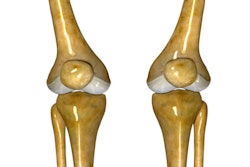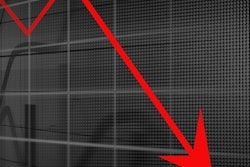
Radiologists' failure to check the validity of requests for CT and MRI scans, along with ignorance among referring doctors of appropriateness criteria for imaging examinations, are the most important reasons for costly inappropriate requests of radiological exams, a new study from Saudi Arabia found.
An audit of 674 scans (449 CT, 225 MRI) conducted in January 2015 at King Fahad Armed Forces Hospital in the southwestern city of Khamis Mushait revealed that 170 (25.2%) examinations were inappropriate. This cost the health service more than 1 million euros, according to lead author Dr. Rusha Sarhan and colleagues in the department of radiology and medical imaging.
"Poor awareness of the appropriateness criteria for radiological exams by requesting physicians must be tackled and more efforts should be dedicated in order to encourage the healthcare community to develop and adopt criteria for appropriate use of CT, MRI, and all other radiological procedures," they noted. "Indeed, more efforts by radiological departments in order to verify validity of requests are expected to be equally useful."
CT, fluoroscopy, and some nuclear medicine examinations that expose patients to ionizing radiation may elevate a patient's lifetime risk of developing cancer, and these studies are being increasingly requested without proper justification, the authors explained in an e-poster presented at ECR 2017 in Vienna. Unnecessary radiological exams lead to a waste of resources, longer waiting lists, and significant delays in appointments, they added.
At King Fahad Armed Forces Hospital, the total number of imaging exams carried out in 2011 rose by 11% to more than 140,000 procedures. The number of MRI studies alone increased by 34% in 2011 and by 11% to over 2,700 exams in 2012. The number of CT rose by 23% in 2011 and by 12% to around 7,500 exams in 2012.
Sarhan and colleagues said the number of requests for radiological exams in 2011 and 2012 was disproportionate to the increase in the number of medical files, the number of outpatient department visits, and the number of admissions over the same period. This was a "strong indication for an increasing abuse of radiology services and performing unnecessary exams," they noted.
Identifying causes of waste
This situation prompted the researchers to conduct an audit of CT and MRI exams during certain in January 2015. A team of four senior radiologists and two radiology technicians was put together.
The researchers designed an assessment form/checklist to evaluate the appropriateness of requests for CT and MRI scans. It contained data about the patient, requesting physician, requesting department, and the five major reasons for unnecessary requests of radiological exams.
Each consultant radiologist evaluated the CT and MRI exams, and data collected by the four radiologists was analyzed and results were collated. Then radiology technicians used the collected data to calculate the percentage of appropriate and inappropriate exams, and a rough estimate of cost, based on the mean costs in the private sector in Saudi Arabia, of inappropriate exams over a 12-month period was also calculated.
A total of 674 scans (449 CT, 225 MRI) were performed, of which 170 (25.2%) were inappropriate. Of the inappropriate exams, 131 were CT and 39 were MRI.
| Reduction of unnecessary CT exams | ||
| Modality | Inappropriateness criteria | No./percentage |
| CT | No valid clinical indication for the study | 89 (68%) |
| CT study is not the suitable study for the patient | 10 (7.6%) | |
| Follow-up is too early or not indicated | 2 (1.5%) | |
| The study is a duplicate | 16 (12%) | |
| Poor clinical history | 14 (10.7%) | |
| Total | 131 (100%) | |
| Reduction of unnecessary MRI exams | ||
| Modality | Inappropriateness criteria | No./percentage |
| MRI | No valid clinical indication for the study | 26 (66.6%) |
| MRI study is not the suitable study for the patient | 5 (12.8%) | |
| Follow-up is too early or not indicated | 2 (5%) | |
| The study is a duplicate | 3 (7.6%) | |
| Poor clinical history | 3 (7.6%) | |
| Total | 39 (100%) | |
| Inappropriate exams and costs | ||||
| Modality | Inappropriate exams % | Inappropriate exams/year | Average cost per exam | Total waste |
| CT | 29.2% | 2,190/7,500 | 360 euros | 798,000 euros |
| MRI | 17.3% | 484/2,800 | 480 euros | 235,000 euros |
| Total | 1.03 million euros | |||
The team used a prioritization matrix to determine the most important inappropriate criteria. This matrix showed that "no valid clinical indication for the study" was the most important cause of inappropriate requests of both CT and MRI. These two factors were the most important that led to inappropriate requests: radiologists' poor verification of the validity of requests by physicians and lack of awareness of the appropriateness criteria for radiological exam requests.
Many medical societies and government bodies are concerned about unnecessary radiological exams that may expose patients to ionizing radiation, which would increase the lifetime risk of developing cancer, Sarhan and colleagues stated.
"Guidelines and appropriateness criteria have been prepared to help referring clinicians make the best utilization of radiological services. Continued use of recommendations of this kind leads to a significant reduction in the number of referrals for investigation and consequently a corresponding reduction in medical radiation exposure," they wrote.
These guidelines work best if they are used in conjunction with clinico-radiological dialogue and as part of an audit process, they continued.
Sarhan was assisted by Dr. Saad Alqahtani, consultant interventional radiologist, and Dr. Ahmad Ehadad, PhD, consultant diagnostic radiologist and chair of radiology, both also from King Fahad Armed Forces Hospital.
To view the authors' full ECR 2017 e-poster on the European Society of Radiology's website, click here.



















